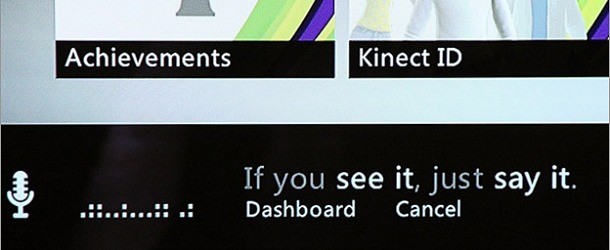Please support Game Informer. Print magazine subscriptions are less than $2 per issue
10 Ways The Kinect Failed Out Of Our Living Rooms

Microsoft had such high hopes for Kinect. Jumping into the giant wake created by Nintendo's smash hit Wii, the Kinect first debuted as the Xbox 360's response to motion-controlled gaming in 2010. A huge marketing push drove early adoption of the peripheral, with sales topping 10 million in just three months. The future looked bright.
So bright, in fact, that Microsoft doubled down by including an enhanced version of the peripheral in the box for Xbox 360's successor, the Xbox One, upon its launch last November. But with Microsoft announcing an Xbox One bundle that removes Kinect from the package, the Kinect's 15 minutes of fame look to be over. With this new reality setting in, we count down 10 ways the Kinect failed Microsoft and consumers.

10. Asleep On The Job
Before Microsoft announced the Xbox One to the world, it brought out a small group of journalists to show off the new hardware behind closed doors. The centerpiece of the experience was a drastically upgraded Kinect that boasted improved depth recognition and better camera performance in low lighting conditions. Microsoft even said it could perform skeletal tracking that would allow it to read the room and immediately identify users positioned in front of it, signing them in automatically.
This sounds great in practice, but in reality the Kinect is sleeping on the job. Using the device at home, many of us have experienced scenarios where we sit down and start watching television, only to have the Kinect recognize us after being seated for upwards of 20 minutes. These delayed responses paint a drastically different (and inferior) picture of performance.

9. Anchoring Gamers To Entertainment
When integrating Kinect into the Xbox One, Microsoft had designs on moving the peripheral's functionality beyond simply supporting motion-controlled games and into everyday interaction with the myriad entertainment options available on the Xbox One. But the platform faced one major hurdle that it never overcame – not everyone needs the Xbox One to be a voice controlled all-in-one entertainment device, because just about every television, Blu-ray player, and streaming device offers a comparable suite of media apps.

8. The Resolution War
Whenever new hardware comes out, technophiles banter in forums and on social media about which console is truly the most powerful. Sometimes the differences are marginal to an untrained eye, but to the hardcore these points of distinction matter and can influence purchasing decisions. After the Xbox One and PlayStation 4 launched, many noticed that Sony's console was consistently producing better resolutions. Part of this reason is the Xbox One partitions some of its power to the Kinect. The tech wizards at Digital Foundry speculate that the Xbox One reserves 10 percent of its graphics resources to "Kinect and apps functionality." That 10 percent being funneled away from developers was enough to funnel some users away from Xbox and toward PlayStation. Now that it's unbundled, Microsoft has hinted that removing Kinect could allow developers to access more of that power, but some damage has already been done.

7. Thinking Of Voice Navigation First
With the Xbox One, Microsoft spent a considerable effort to create myriad ways owners could use simple voice commands to navigate the dashboard. This came at the expense of the basic controller-based navigation that the majority of gamers use on a regular basis. This fact was not lost on Microsoft executives. After they removed the Kinect requirement, Phil Spencer admitted Microsoft needed to rethink the user interface. "When we made the decision that you could unplug Kinect, we had to think about somebody using the dash with just a controller," he said. "Even if you have Kinect plugged in, there are people who are just going to use the controller for certain parts of the dash. We're committed to updating the dash for all users." That miscalculation didn't help endear anyone to the Kinect's cause, regardless of how cool the idea sounds of using your voice to navigate menus. It was also a half-baked approach, as three of the thirteen launch countries still have no voice command functions, and only five of the remaining ten have "natural voice/full functionality."

6. Tail Wagging Interference
Microsoft once celebrated Kinect's ability to use gesture recognition for menu navigation. Simply wave your hand in the air and it would become a cursor, allowing you to hover the hand icon on the app or screen function you wanted to use. This system has caused more harm than good, reading my overzealous dog's wagging tail as a hand and fast-forwarding and rewinding movies at random times. You would think a powerful camera that can supposedly articulate individual fingers would be able to tell the difference between a furry tail and a human hand.

5. Paltry Game Support
When the Xbox One released this past November, Microsoft chose against packing in a game to showcase the new and improved Kinect, giving users the option of downloading a free fitness app instead. This put the burden of proof on the consumer to figure out whether or not the Kinect was a valuable addition to their console. With both Fantasia and Kinect Sports Rivals pushed out of the launch window, Microsoft only had one decent Kinect-based game (Just Dance 2014) to state that case (sorry, Fighter Within). Not a smart move when you need to convince consumers to spend an extra $100 for your console over the rival system.

4. One Size Does Not Fit All
One aspect Kinect has struggled with since the beginning is its place in the living room. The original version required too much light and space for it to work well in many households, and as consumers started mounting televisions on walls instead of placing them on media centers, there was no longer a good place to put the hulking, wired camera peripheral. Even though the new Kinect claimed to improve the field of view by 60 percent, these issues never went away.

3. Bad Listening
One of the big selling points during the lead up to the Xbox One launch was the drastically improved Kinect microphone, which Microsoft claimed virtually eliminated environmental noise, allowing the system to use voice recognition for everything from pausing your movie and opening apps to changing the channel of your cable box and Skyping with friends. Microsoft was so confident with this improvement that it originally planned to ship the device without a headset until legions of gamers voiced displeasure and it reversed course. In reality, as with the camera recognition, performance is shaky at best. Kinect easily recognizes simple commands such as "Xbox, watch TV" but the second you utter something more challenging like "Xbox, watch NBC Sports" the results become very inconsistent.

2. Giraffe Gaffe
After all the pomp and circumstance about how the Kinect could read skeletal features to identify users, this error takes the cake. During one game session in the Game Informer conference room when the Xbox One just launched, the Kinect welcomed Kyle Hilliard to the festivities. There was only one problem – Kyle wasn't in the room. Instead, the Kinect was reading the position of a stuffed giraffe standing in the corner. Either Kyle needed to get his bone density checked out or the Kinect needed a pair of glasses. Since Kyle isn't a scientific miracle, we're going with the latter.

1. The Cost To Play
Many theories are flying as to why the PlayStation 4 is currently outselling the Xbox One. Maybe it's the slight graphical superiority. Maybe it's the steadfast commitment to indie developers. Maybe it's Microsoft's lack of a yearlong head start, which it had with the Xbox 360. But at the end of the day, we keep coming back to price. The Kinect was the primary reason that the Xbox One debuted at a price point $100 higher than its competitor. Recently dropping Kinect from the bundle allowed Microsoft to reach price parity, but now it is playing from behind.










